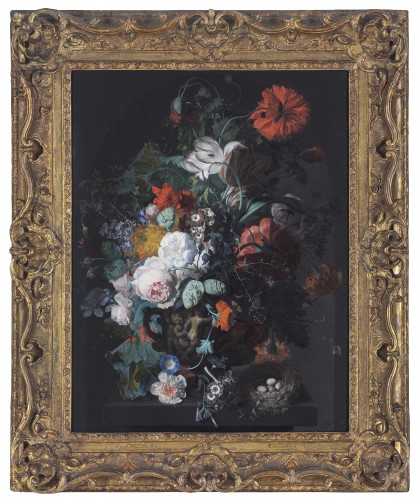A magnificent Dutch flower painting by Jan van Huysum (1682-1749) has been acquired for the nation by the National Galleries of Scotland through the Acceptance in Lieu scheme. It is the first Dutch flower still life to enter the Scottish National Gallery’s collection.
The painting is the first work by this artist to enter the National collection. Indeed, no painting from this period of van Huysum’s career is in any Scottish public collection.
Commenting on the acquisition, Director of the Scottish National Gallery, Michael Clarke said, “Van Huysum was an absolute master of the art of flower painting in 18th-century Holland. Expensive flowers had been imported into Holland from the seventeenth century onwards and there was a great demand from the affluent merchant classes for paintings which depicted these exotic blooms. The hyper-realism and technical sophistication of many of these flower paintings is incredible. This is a really major example, and we are delighted to have been allocated it through the government’s Acceptance in Lieu scheme.”
Cabinet Secretary for Culture and External Affairs, Fiona Hyslop said, “The Acceptance in Lieu scheme allows the Scottish Government to acquire important works of art on behalf of our national collections. With up to 10 items allocated to Scotland each year, it is an excellent way to enrich the range of internationally renowned paintings and artefacts that are available for everyone in Scotland to enjoy. I was very pleased to be given the opportunity to allocate the Jan van Huysum painting to the National Galleries of Scotland. It’s an important and valuable acquisition and one which I hope gives great joy to the Galleries’ many thousands of visitors.”
Jan van Huysum is regarded as the most important painter of flower still lifes of his time and received prestigious commissions from royalty and aristocracy throughout Europe. This painting belongs to a small group of works from Van Huysum’s transitional period when he began to introduce more light into his dark compositions, eventually leading to his bright flower paintings with landscape backgrounds. This particular painting is his largest and most ambitious on copper, a support he used only occasionally.

